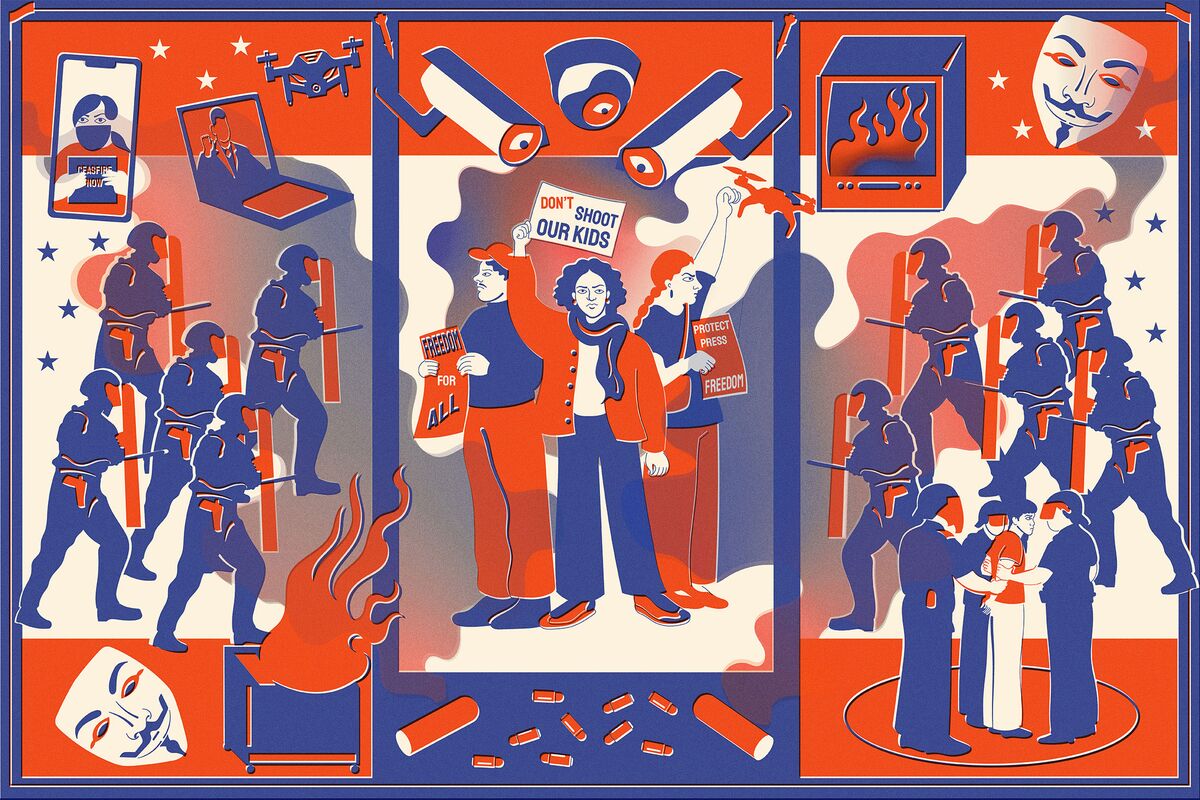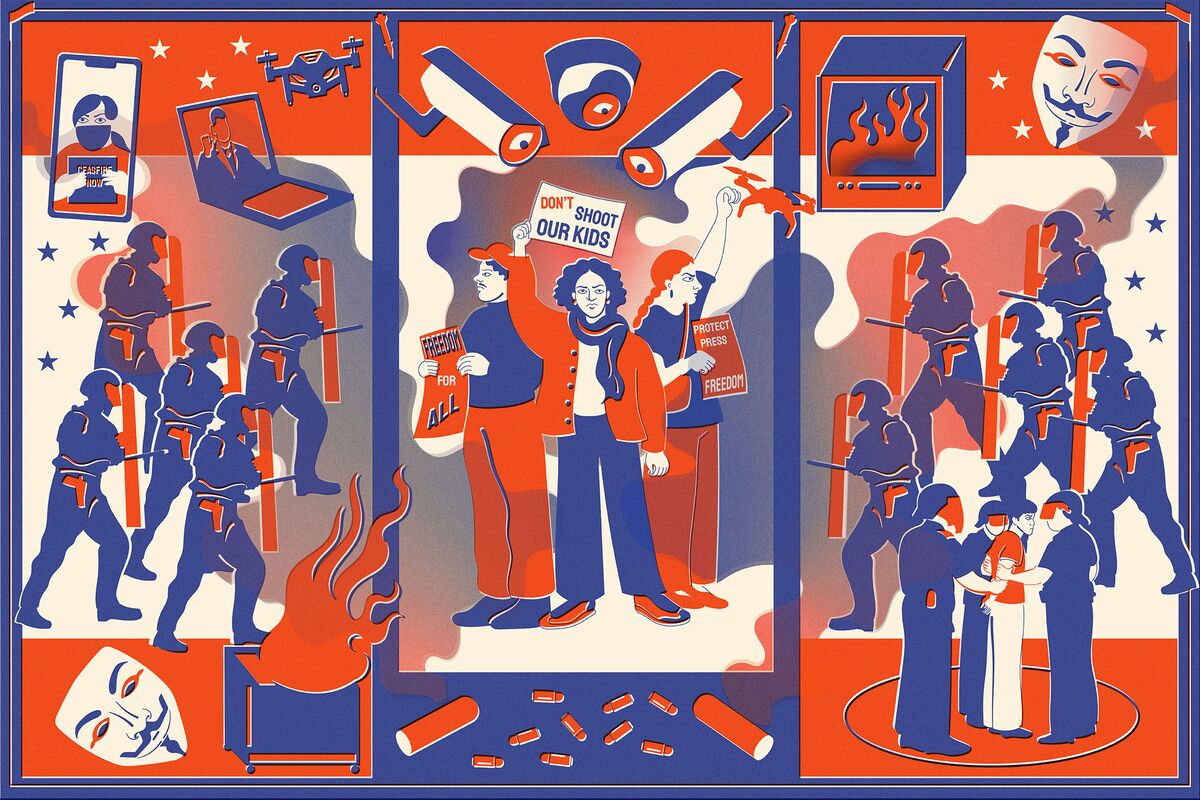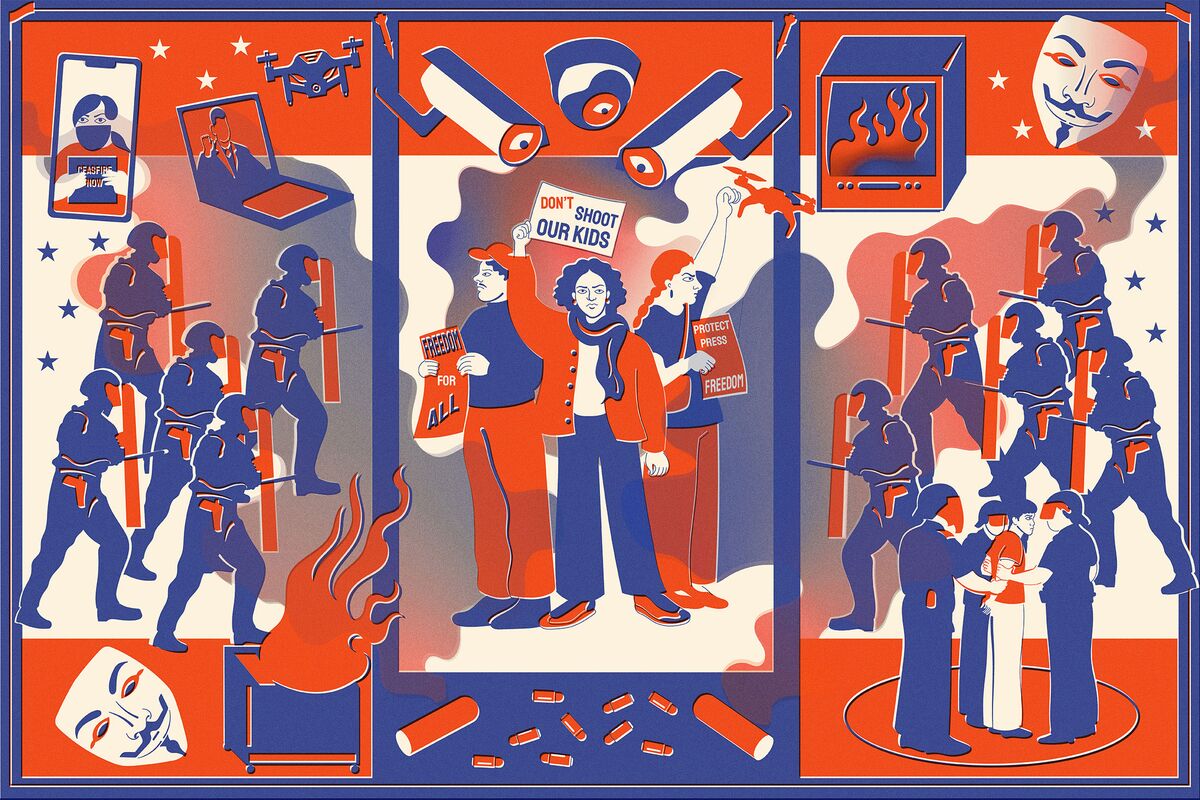Graphic novels are the perfect medium for a descent into dystopia
Graphic novels are the perfect medium for a descent into dystopia

You Must Take Part in Revolution uses Hong Kong’s 2019 protests to explore an alternate-history showdown between the US and China.

We now live in darker and more morally ambiguous times. Anti-immigrant and right-wing parties have gained ground in the US and across Europe. Democracy appears to be losing its appeal for a generation. More than half of young people in the UK between the ages of 13 and 27 believe the country would be a better place if a strong leader was in charge who “did not have to bother with parliament and elections,” a poll showed in February.
This complex universe is reflected in the recently released You Must Take Part In Revolution (Street Noise Books), a dystopian graphic novel by Badiucao, a dissident Chinese artist living in Australia, and Melissa Chan, a Hong Kong-born American journalist who in 2012 was the first foreign correspondent in more than a decade to be expelled from China after reporting on subjects such as the country’s “black jails.” The novel takes Hong Kong’s 2019 protests as its starting point, telling an alternate history in which China and a proto-fascist US government (led by a woman) are at war, and Taiwan has been divided in two, Korea-like, by a demilitarized zone.
The plot concerns three idealistic young friends who develop different beliefs about the protests and are separated. It culminates when two of them reunite to take part in an assault on the Hong Kong prison where the third is being held, with a bloody outcome.
Video-game review site IGN named You Must Take Part In Revolution one of the most anticipated comics of 2025 and described it as “perfect” — a valuable endorsement for a book that’s trying to catch the interest of a younger demographic.
...
Graphic novels, at least in their more simplistic and escapist strands, have also reflected the world’s gathering democratic dystopia. Moore’s Watchmen set out in the 1980s to subvert the superhero genre, showing a group of flawed crimefighters grappling with their failings in retirement. The book frequently tops rankings of the greatest graphic novels. But the myth of the strongman (or woman) who will solve all the problems of an increasingly complex and confusing world clearly retains its allure.
The darkening trend of geopolitics offers a moment of opportunity for the graphic novel. Dystopian classics such as 1984, Brave New World, The Handmaid’s Tale, Slaughterhouse-Five, Lord of the Flies and Fahrenheit 451 have already been adapted into graphic form. A version of The Road appeared last year that was approved by author Cormac McCarthy before his death in 2023 (the illustrator is French cartoonist Manu Larcenet). In nonfiction, a graphic edition of On Tyranny, Timothy Snyder’s bestseller on how to survive and resist the arc toward authoritarianism, appeared in 2021.
Baby Blue, a thriller by Swedish comics artist Bim Eriksson published in March, is set in a society that polices emotions; it plays on the (very realistic) fears of an oppressive techno-surveillance state. R.U.R., released in December, is a graphic adaptation of a 1921 Czech play that gave us the word “robot.” “Dystopias are nothing new,” said Bill Campbell, head of the book’s US publisher Rosarium. One person’s dystopia is another’s reality, and for many, especially oppressed minorities, “reality isn’t particularly changing,” he said.
Still, publishers of more literary graphic novels are seeing dystopian themes as a breakthrough topic to attract general readers, according to Meg Lemke, graphic novels reviews editor at Publishers Weekly in New York. “There’s another surge of interest in dystopian and apocalyptic tales from across publishers,” Lemke said. The global graphic novel market will grow to almost $37 billion by 2032 from about $16 billion last year, Business Research Insights forecasts.
